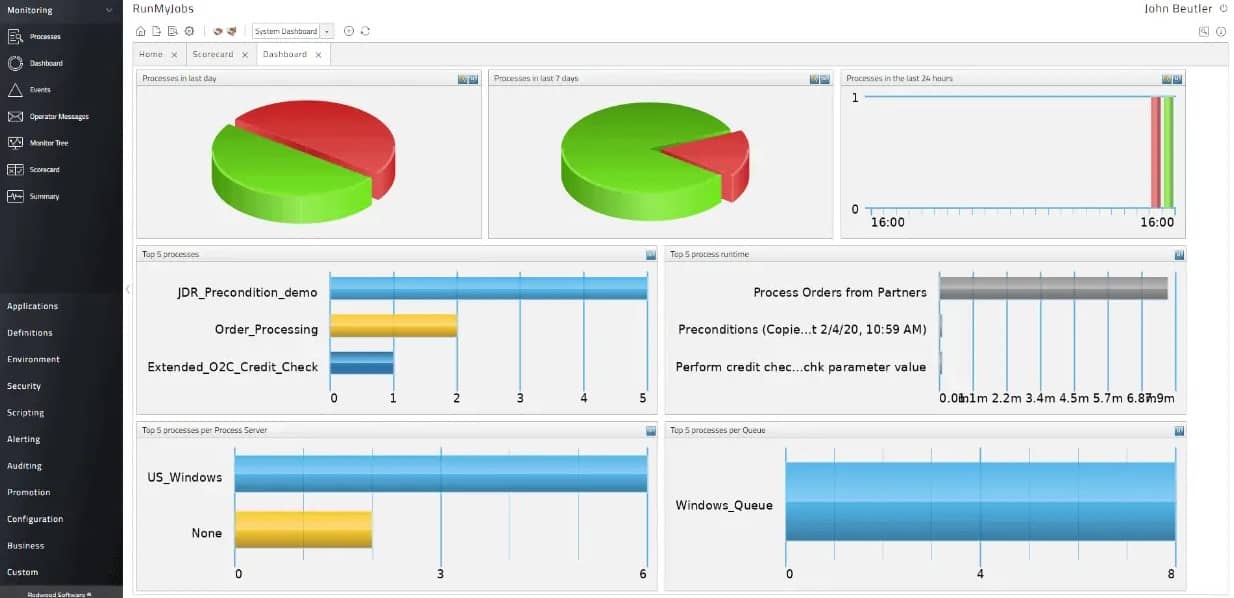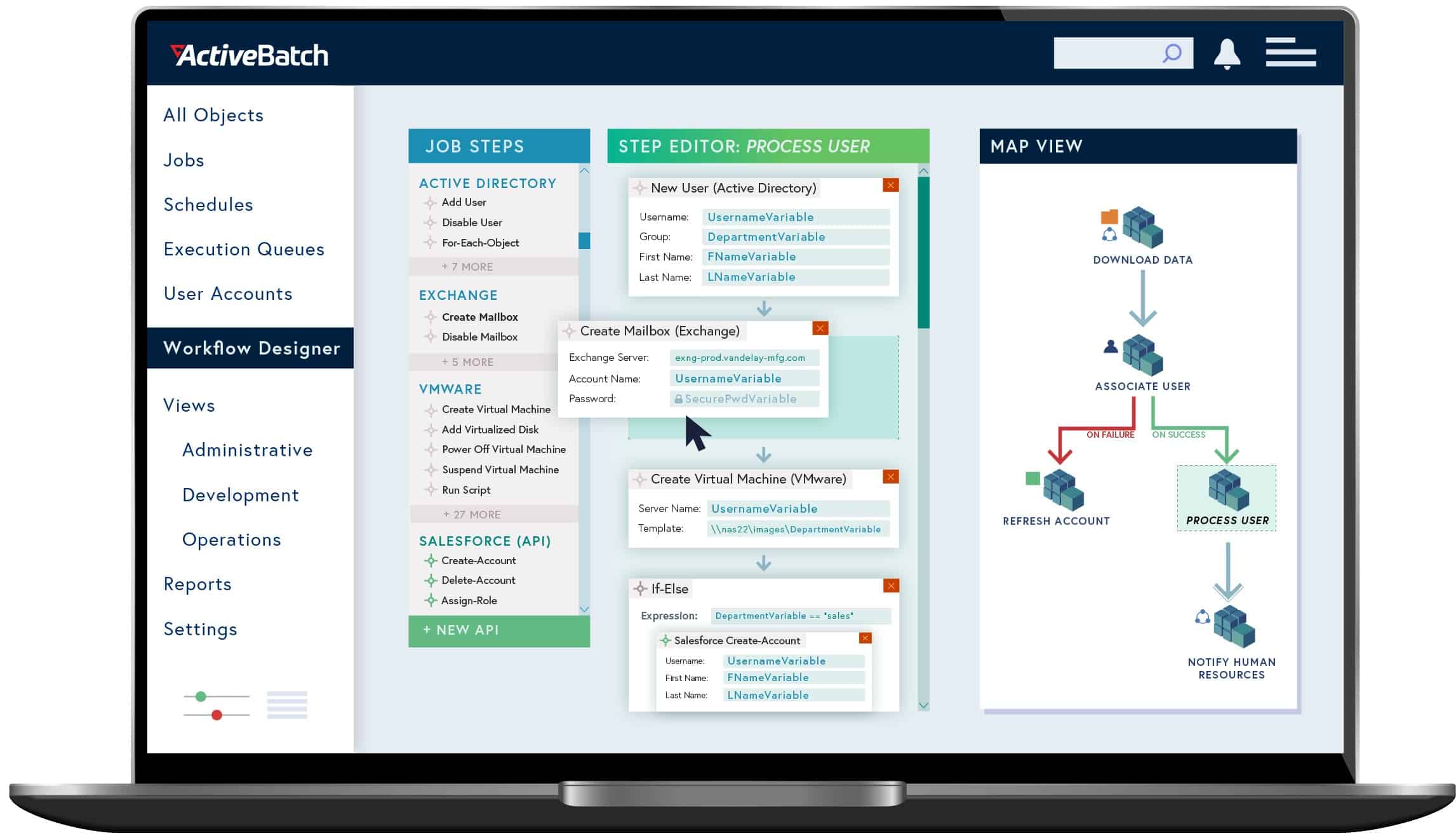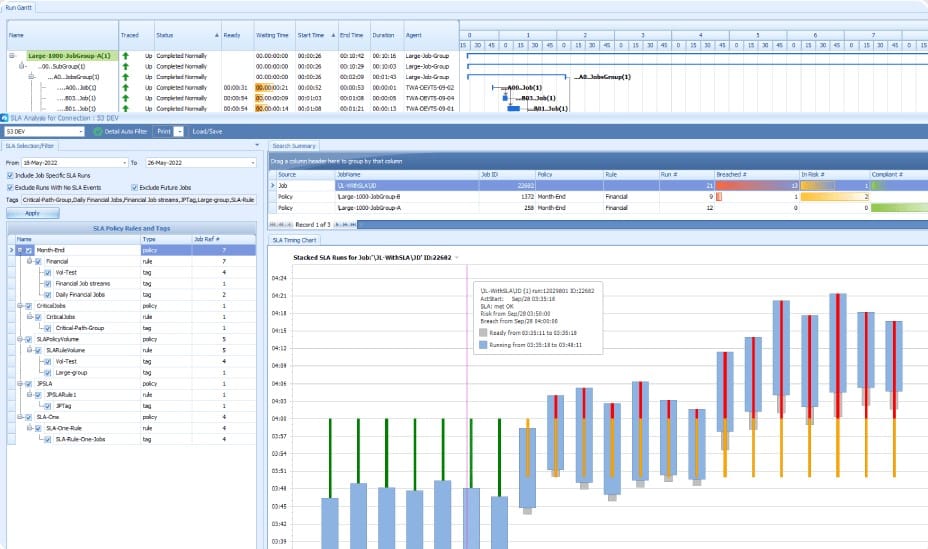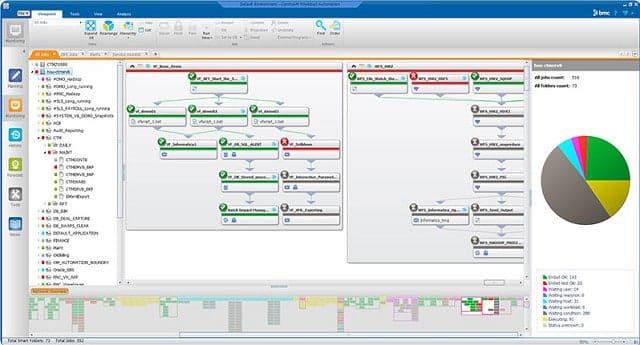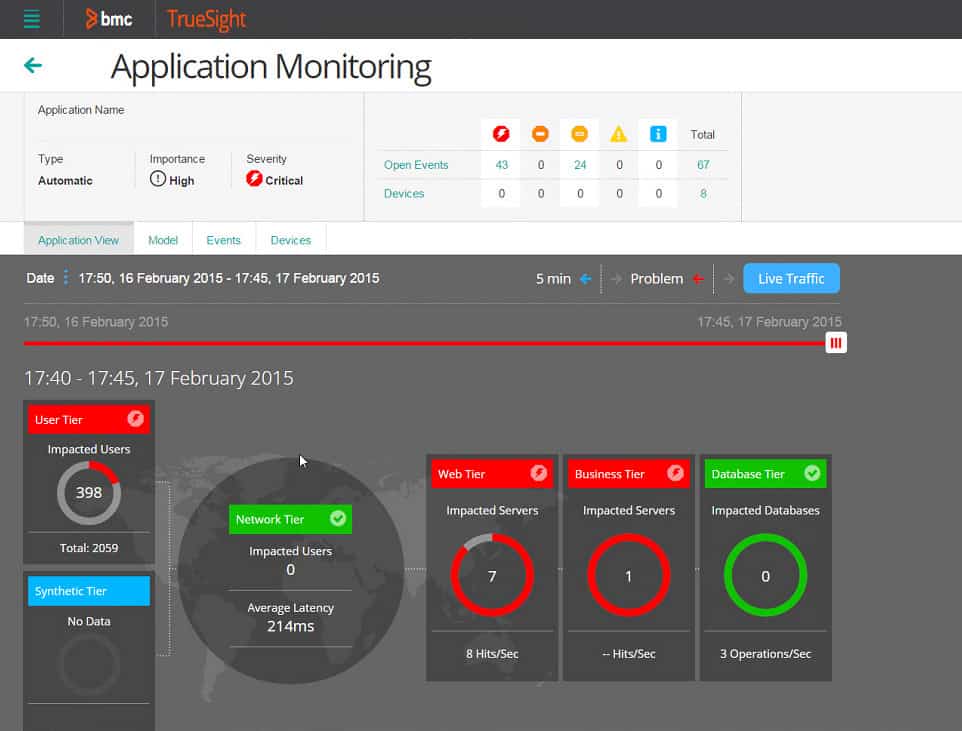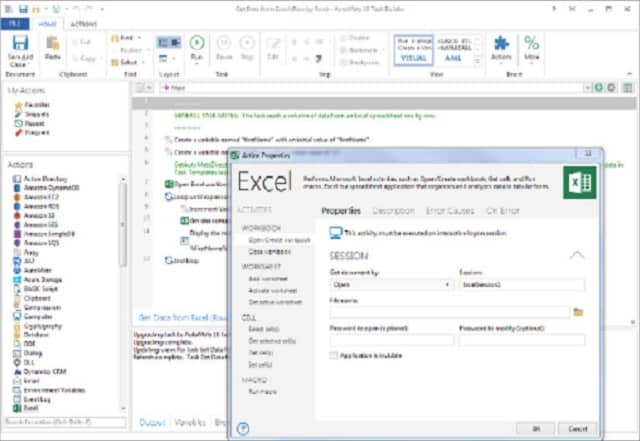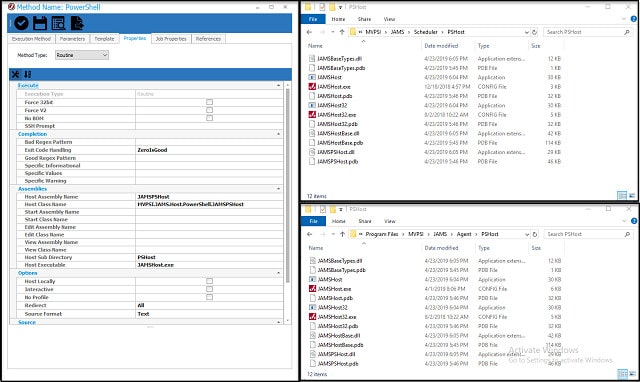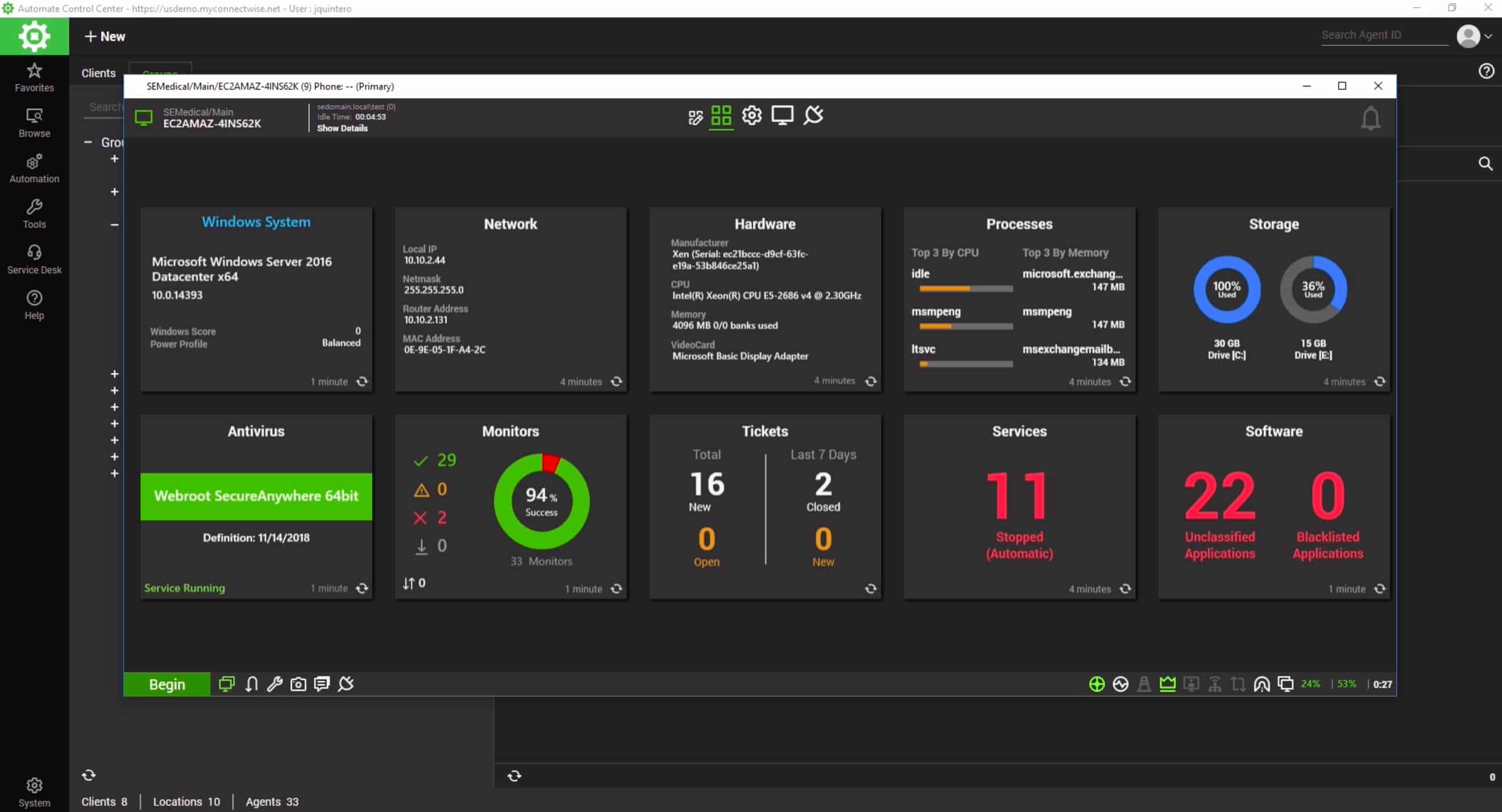Redwood is a popular IT automation and workflow management platform, is widely used for scheduling tasks, automating processes, and enhancing operational efficiency across IT departments. However, while Redwood is a robust tool, it may not be the best fit for every organization. Depending on specific business needs, budgets, or technical requirements, businesses might explore alternatives that provide similar or more suitable functionality.
In this article, we examine some of the top Redwood alternatives, providing detailed comparisons of the features, benefits, and use cases of other automation and workflow tools. Each alternative is designed to optimize various aspects of network management, process automation, and IT operations, with features that align with different organizational goals. These alternatives range from flexible, open-source solutions to comprehensive enterprise-level platforms, each catering to different business sizes and requirements.
Understanding these alternatives is essential for organizations aiming to improve efficiency, streamline their workflows, and ensure their IT systems are both scalable and adaptable. Whether you need enhanced reporting features, more integration options, better scalability, or advanced monitoring tools, there are many viable Redwood alternatives available in the market.
This guide will help you explore the best options and consider how each platform’s unique offerings align with your organization’s operational needs. By comparing key alternatives, you will be able to make a more informed decision that drives efficiency, reduces operational overhead, and improves overall productivity within your IT environment.
Here is our list of the best Redwood alternatives:
- ActiveBatch EDITOR’S CHOICE A very close match to the functionality of Redwood but offered as an on-premises package. Available for Windows and Windows Server. Access a free demo.
- Tidal Workload Automation (FREE DEMO) A task scheduler that is able to manage the execution of software on multiple platforms and pass data between them. Access a free demo.
- BMC Control-M A business process automation system that operates through application orchestration. Available as a hosted service or for installation on Windows Server and Linux.
- BMC TrueSight Automation for Servers A system administration tool that uses scripts to perform regularly scheduled tasks to monitor and maintain servers. Available for Windows, Linux, and Solaris.
- Fortra’s Automate A system that builds up batch jobs by recording actions and replaying them. Available for Windows, Windows Server, Linux, and AIX.
- Fortra’s JAMS Enterprise Job Scheduler A cloud-based job scheduler that can execute batches across multiple platforms.
- ConnectWise Automate A script manager and task automation that is part of a remote monitoring and management package. This is a cloud-based service.
About Redwood
The name Redwood applies to a product and also the company that provides it. Redwood Software, based in the Netherlands, was founded in 1993. The business was created by Tijl Vuyk, who still runs the company.
The Redwood system was initially called RunMyJobs. However, as it offers one platform, the business dropped that name and now calls its system simply “Redwood.”
What does Redwood do?
To fully understand what workload automation is, you need to think of all of those quick scripts you put together over the years to save time and relieve you of the need to keep typing in the same series of commands to perform a task.
You probably have a whole library of these little scripts, and you probably set up several batch jobs on a system scheduler, such as Cron. If you put a graphical interface on the front of those scripts and schedules, you have the basis of what Redwood does. RunMyJobs provides direct integrations to S/4HANA or BTP, along with over 1000 out-of-the-box SAP wizards and templates. I like it for its ability to keep a clean core and integrate with other SAP platforms.
The cloud-resident Redwood presents a workload management system. A workload is very similar to a workflow, and it can be defined in a process flow chart in the Redwood dashboard. In addition, the workload definition system offers templates that can be loaded into the workload editor. In this, you define processes and link them together – either in series or in parallel.
Each process has a definition screen attached to it. In this, you select an action from a list of categories and specify which software or service should be used to implement the process.
Once you have a workload/workflow defined, you can store it for later use or add it into the scheduler. The workflow can be triggered at a specific time. This is a very familiar action for most systems administrators because many of the types of tasks you would use Redwood to manage need to be run out of office hours.
Going one step further with the scheduler, you probably have standard mundane tasks to perform regularly, such as clearing out the server’s temporary files. In these cases, you set up a sequence of steps and save them as a workload. Then you put that workload into the scheduler to run on a cycle, such as nightly or weekly.
Ultimately, once you are comfortable with the system, you will find many tasks that need to be strung together that can be managed through Redwood. Based in the cloud, Redwood can connect to other systems to run a batch job. As the Redwood system isn’t running on one of your servers, it isn’t limited to only operating on your base network.
Redwood can implement steps in a process on different servers anywhere, including on the cloud. An example of where you would need that type of functionality is in the processing of log files. You need to locate log files on local devices, upload them to a log server over a secure connection, then perform processing tasks on the log server.
Redwood’s catchphrase is:
Automate anything anywhere
Using Redwood
Getting started with Redwood is very easy. The system is based in the cloud, so you don’t need to install the software to begin using it; you just need to set up an account.
The Redwood system needs access to all of the servers on which you intend to run jobs. So, you will need to create secure user accounts on each of those systems and enter the connection credentials into the Redwood dashboard. After that, you are set to go.
Redwood pricing
Redwood is a metered service. Therefore, you can set up as many batches as you like. However, you only get charged when you run a job through the system. The charge rate works on a combination of batch runs and user accounts.
Redwood doesn’t publish its tariff. Instead, you have to contact the Sales Department for a quote. Therefore, the best introduction to the Redwood system that you could get is through the demo system.
The best Redwood alternatives
Redwood is a workload automation service. Although Redwood has a lot going for it, it isn’t the only option in its field. Even if you are pretty sure that you are interested in the Redwood package, it is always a good idea to trial several candidates before you buy any software package or service. Therefore, you recommend looking into a few Redwood alternatives before you commit to a specific workload automation service.
Our methodology for selecting a Redwood alternative
We reviewed the market for workload automation systems like Redwood and analyzed the options based on the following criteria:
- A graphical editor for workflow process definition
- A scheduler to enable one-time or repeated timed batch execution
- A system that can implement cross-platform batch jobs
- A monitoring system that logs batch execution statuses
- Alerts for system problems arising during batch runs
- A no-cost assessment period or demo system
- A good package of functions at a reasonable price
As Redwood is a cloud-based service, it is a suitable candidate for businesses no matter what operating systems they currently have on-site. When looking for alternatives to compare to Redwood, we aimed to find other cloud systems and options for installation on Windows Server and Linux.
You can read more about each of these Redwood alternatives in the following sections.
1. ActiveBatch EDITOR’S CHOICE
ActiveBatch is probably the best Redwood alternative for you if you don’t want to use a SaaS package for workload automation. This package is implemented as on-premises software, but it can run jobs across systems, including remote sites and cloud servers.
Key Features:
- Visual Batch Creator: Assemble a process flow diagram
- Automate Anything: State the inputs and outputs for each software package
- Include File Transfers: Secure transfers with SFTP, FTPS, and HTTPS
- Batch Jobs can Cross Platforms: Process files before and after movement
- Scheduled or On-Demand: ActiveBatch includes a job scheduler
Why do we recommend it?
ActiveBatch is another product from Redwood Software, so this is a very close match for the Redwood Workload Automation system. This tool has a batch creator screen that lets you create a visual plan and then end details for each stage in the batch. Define inputs and outputs and how third-party tools will work together.
Each task in ActiveBatch is called a job, and the processes within each job are called job steps. The dashboard includes a guided job creation system that lets you define each step by specifying which program to run, where, and with what parameters. In addition, you can call your scripts from within the system to form a job step.
A key feature of ActiveBatch is its scheduler. This lets you launch a job on a delay or a repeated schedule. In addition, services within the ActiveBatch system include templates for managed file transfers and email processing. As a result, it is easy to set up jobs that implement steps on different devices. For example, you can run an action on one computer to collect files, run an effort to transfer them, and then run an action on a different computer to process the received files.
Who is it recommended for?
This tool is a good option for companies that want to host their own systems rather than subscribing to SaaS packages. The software package runs on Windows and Windows Server. A batch can be triggered by the clock or an event. It is possible to transfer files within a batch and perform processing on remote devices.
Pros:
- Batch File Creator and Editor: Link software execution together
- Job Scheduler: Set to run once later or run repeatedly according to a calendar
- Jobs can Implement Steps on Different Devices: Transfer data between platforms for each step
- Includes Managed File Transfer Features: Secure transfer protocols
- Suitable for Virtualization Maintenance: Also maintenance tasks for physical servers
Cons:
- Not Available as a SaaS Platform: A software package for Windows or Windows Server
The ActiveBatch service is a good choice for monitoring and managing virtualizations and also perform network traffic management. ActiveBatch is very flexible. However, this is more the type of tool you would use for system maintenance tasks than business process automation. The software installs on Windows or Windows Server, and you can assess it with the demo system.
EDITOR’S CHOICE
ActiveBatch is our top pick for a Redwood alternative. It has an exemplary user interface that includes a process flow creator and editor that makes assembling a batch job very easy. The ActiveBatch system is also centered on a job scheduler, enabling workloads to be automated with single, postponed runs or on a regular cycle.
Access FREE Demo: advsyscon.com/en-us/demo/get-started
Operating system: Windows and Windows Server
2. Tidal Workload Automation (ACCESS DEMO)
If you are interested in Redwood but want to compare it against another workload automation system, look at Tidal Workload Automation. This is also a product from the Redwood group. Tidal Workload Automation was created by Cisco Systems but it has become a division of Redwood. The tool provides a way to automate processes across platforms and the system integrates into software packages so you don’t have to implement any programming or data reformatting to make orchestration work.
Key Features:
- Pre-Processes Data: Scan files before moving or processing into an ERP
- Crosses Platforms: Secure transfer protocols with SFTP and FTPS
- Event-Driven Triggers: Specify an action that will launch a batch
- Scheduler: Launch a batch on a calendar
Why do we recommend it?
Tidal Workload Automation is another product of Redwood Software. The batch creator for this tool has a different layout to that of Redwoom and it looks a little like a flow chart. Like its stablemates, this package can cross devices while executing a workload and even manage parallel stages.
The Tidal system lets you define different triggers to launch workflows. The most commonly encountered of these is a timer and calendar. This is a scheduler that can launch processes automatically at a specific time, such as running batch jobs overnight when resources are underutilized. Other triggers can be events, such as the receipt of an email to a particular account or a file upload.
Distributing data from an ERP to different third-party systems or merging data from external systems into ERP records are two common types of tasks that clients use the Tidal system for. The system can also be used for data verification as part of an input process.
Tidal can perform many other tasks from security checks to service level agreement (SLA) tracking. The service is able to send out notifications, such as email responses or social media posts without any human intervention.
Who is it recommended for?
This is a close competitor to Redwood Workload Automation and ActiveBatch, so a side-by-side assessment of the three tools would help any buyer identify the subtle differences between them and decide on the right package. All three will appeal to mid-sized companies.
Pros:
- Enables Data Management: Export, check, or transform values then shunt them back into the originating system
- Provides Data Movement Between Applications: Manages orchestration
- Transfers Files Between Applications: Enables software on different platforms to coordinate activities
- Offers Data Verification and Standards Enforcement: Create your own data validation processes
Cons:
- Watch a Demo: We’d prefer a free trial
Tidal offers a demo of the Workload Automation system but there is no free trial.
3. BMC Control-M
We selected two BMC products as potential Redwood alternatives. This is because, being driven to provide a way to automate anything, Redwood can be used to automate business processes or system maintenance tasks. Therefore, the first BMC system we are looking at, Control-M, focuses on managing business process automation.
Key Features:
- Manage Data Exchanges: Uses connectivity native to applications
- Can Create Test Scripts: Cycle through a list of variables to test multiple conditions in one test run
- Many Workload Launch Options: Runs on a schedule, on a trigger, or on demand
Why do we recommend it?
BMC Control-M is an orchestration system and that term is another way of saying workload automation. The workflow designer in this package looks a little like a tree structure and it can provide parallel processing. Name a software package, define its inputs and output, then fit it into the sequence to build up a batch file.
Control-M has a slightly different approach to automation than that taken by Redwood. It focuses on application orchestration. However, effectively, the results are the same as those achieved by Redwood when focusing on business process automation.
Orchestration means relying on the integrations that many application producers build into their products. It also exploits the data exchange utilities that many applications include. As a result, the opportunities for orchestration are exceptionally high among products that come from the same provider.
Control-M includes a workflow editor in its dashboard, which is similar to that available in Redwood. You string together processes and nominate the applications that will perform each step. The workflow editor then processes those steps into commands and bundles them into batch files for execution. These jobs are then cued up in a scheduler. Thus, Control-M is beneficial for managing a CI/CD pipeline.
Who is it recommended for?
This system would appeal to mid-sized businesses that don’t feel ERPs provide the functionality that they need. You can create your own ERP from your favorite software with this system. Deployment options include a SaaS platform and an on-premises version that runs on VMware.
Pros:
- Suitable for Application Task Automation: Business data processing
- Fast and Reliable Data Movement: Uses native orchestration features embedded in applications
- Includes a Workflow Creator: A visual editor
Cons:
- Suits Business Data Processing Jobs: Not a good choice for administration task automation
The software package for Control-M can run on Windows and Unix hosts. There is also a SaaS version called BMC Helix Control-M. BMC offers a free trial of Control-M.
4. BMC TrueSight Automation for Servers
TrueSight Automation for Servers is a direct competitor to Redwood because it enables system administrators to automate maintenance tasks and frequently triggered duties, such as user onboarding. The system has a job batch creator, and it is linked to a scheduler. However, if you already have your library of scripts, you can lad them into the True Sight system and carry on using them.
Key Features:
- Designed for Admin Automation: For regular processes and maintenance tasks
- Automate Patch Management: Triggered by regular vulnerability scans
- Compliance Management: For CIS, DISA, HIPAA, PCI, SOX
Why do we recommend it?
BMC TrueSight Automation for Servers is the second BMC tool on this list. However, while Control-M is an orchestration tool, TrueSight is a server management automation system. Services in this package include an automated patch manager and scripts for routine maintenance tasks, such as clearing temporary files.
The True Sight Automation for Servers system is a good tool for improving system security. It can scan configurations to prevent unauthorized changes that could be the first step in a hacker attack. It is also helpful for patch management, which will trigger off regular vulnerability scans.
The True Sight dashboard has templates for specific tasks that need almost no adjustments., These perform regular system scans and alert you to problems or automatically implement remediation. This automation system can also monitor traffic patterns and help to improve time-sensitive applications, such as VoIP and video streaming. Tasks such as log management or system backups can also be performed through the True Sight service.
This software package installs on Windows, Linux, and Solaris. Unfortunately, BMC doesn’t offer a free trial or a demo of TrueSight Automation for Servers.
Who is it recommended for?
This package is intended for use by systems administrators to save time on standard server management tasks. The tool will maintain a software inventory and keep all packages up to date. Although you can manage multiple servers with one account, this tool isn’t intended for building workflows across computers.
Pros:
- Includes Guided Batch File Creator: Integrates a job scheduler
- Automates Services Set Up: For example, manages virtualizations
- On-Premises Software Package: Runs on Windows, Linux, or Solaris
Cons:
- No Free Trial: No demo
5. Fortra’s Automate
Fortra’s Automate offers a different method for workload automation – a technique called robotic process automation (RPA). It is available in two formats. The first of these is Automate Desktop, which works on application orchestration. This is particularly powerful with Microsoft products.
Key Features:
- Record and Replay Actions: Easy way to create batch jobs
- Creates Macros: Stores your demonstration to form a workload
- Workload Management Options: Run on a schedule or on a trigger
Why do we recommend it?
Fortra’s Automate is a new brand for an established product. Until recently, this was HelpSystems Automate but the company changed its name. The system is able to string together software so that it works as an ERP. The service can also assemble a batch through an action recorder.
The Automate Desktop system lets you record macros for actions within each application then string together execution into a batch to let an entire business process, such as invoicing or account data consolidation, be fully automated.
The other automation method available from Automate is offered in the two higher editions of the package, called Automate Plus and Automate Ultimate. These include the application orchestration system but also have a service that is of use to system administrators. This lets you record your actions on a server when performing specific tasks. The recorder will then replay those actions on a schedule. This is a novel way to assemble batch jobs quickly.
Automate Plus and Automate Ultimate help implement tasks such as bulk file transfers or system cleanups. They can trigger actions on many different devices during the execution of one batch.
Who is it recommended for?
This package is similar to BMC Control-M. Extra utilities in the two higher plans mean that you can also use the system to record actions and create a process file. This is intended for use by administrators to automate system management tasks. This is an efficient package for mid-sized businesses.
Pros:
- Suitable for Non-Technical Staff: Batch jobs are very easy to set up
- Process Library: Assemble a workload by connecting together drag-and-drop icons that represent software actions
- Includes a Scheduler: Will manage delayed and repetitive, unattended batch job execution
Cons:
- Not Available as a SaaS Platform: A software package for Windows, Linux, and AIX
Automate Desktop installs on Windows. The two higher versions are available for Windows, Linux, and AIX. You can assess Fortra Automate risk-free with a 30-day free trial.
6. Fortra’s JAMS Enterprise Job Scheduler
Fortra’s JAMS Enterprise Job Scheduler is a SaaS package, so it isn’t limited to working with one operating system, one server, or even one site. This system can access several different locations, including cloud servers, to fulfill all of the steps in a batch. Like Redwood., this system is very flexible and based on a batch creator and a job scheduler.
Key Features:
- Cross-Platform Batches: Zip files and transfer them with SFTP
- Launch Options: Run on a schedule or a trigger
- Event Monitoring: Run status reporting
Why do we recommend it?
Fortra JAMS Enterprise Job Scheduler is a well-established tool that already has a sizable customer base. While Fortra Automate is an on-premises package, JAMS is a SaaS platform. This tool is better positioned to coordinate automated tasks across an enterprise. It can manage multiple endpoints and run processes on them.
The batch creator is guided and uses natural language. Several fields are populated from a drop-down list of options, so the system is easy enough that anyone can set up a batch for automated processing. Restrictions on the options mean that you can’t mess up and create a job that isn’t practically possible to execute. If you have your scripts already, you can include these in a schedule through the JAMs interface.
Who is it recommended for?
Fortra provides mid-sized businesses with another option for workload automation. The marketing advantage of JAMS lies with the ease of assembling a batch with its easy-to-use workload editor. Fortra markets this tool as an administration automation tool rather than a system to automate business processes.
Pros:
- Batch Creator: Has a natural language guide
- Job Scheduler: Run jobs once at a later time or set up a regular execution run
- Run Existing Scripts: Recognizes PowerShell
Cons:
- No On-Premises Version: This is a SaaS platform
When a job runs, JAMS records all events to a log file, and you can set it to notify you directly of problems. For example, if you set a job to run out of office hours, you probably wouldn’t want notifications. You can experience JAMS for assessment with a 14-day free trial.
7. ConnectWise Automate
ConnectWise Automate is just a batch job scheduler. It is a complete remote monitoring and management package that is designed for managed service providers. The IT departments of multi-site organizations can also use the utilities in this SaaS platform. The system includes a task automation section that lets you build scripts and run them on a schedule, just like the facilities of Redwood.
Key Features:
- Remote Monitoring and Management: An RMM package for system administration
- Task Automation: Maintenance jobs
- Good for MSPs: Multi-tenant architecture
Why do we recommend it?
ConnectWise Automate is a remote monitoring and management (RMM) package. As its name suggests, the key selling point of this tool is that it will automate a lot of routine tasks, squeezing extra value out of a team of IT support technicians. This is a SaaS platform.
The batch job service in ConnectWise Automate includes a library of off-the-shelf scripts that you can run. You can also modify them, alter the sequence of their steps, or pick a template to make your tasks batches. It is also possible to upload the scripts that you already have. All of the batches in your library can be run on the ConnectWise Automate scheduler.
The primary services of ConnectWise Automate provide tools for help desk and maintenance technicians so that they can access remote devices for troubleshooting and problem resolution. In addition, the service includes system mapping services for devices and software inventories. Maintenance assistance in the package offers automated patch management and onboarding scripts. There are also several self-service systems that you can provide to users for tasks such as password management.
Who is it recommended for?
This package includes monitoring services as well as system management tools. This package is intended for use by the IT support departments of mid-sized businesses or by managed service providers (MSPs). The package also provides a self-service portal for end users.
Pros:
- Highly Respected Brand: Also offers a PSA
- Upload Your Own Scripts: Run them through the scheduler
- A SaaS Platform: Hosted by ConnectWise
Cons:
- Mostly of Interest to Managed Service Providers: Can keep client data separate in subaccounts
You can assess the ConnectWise Automate package by accessing its demo system.
Redwood FAQs
What is Redwood system?
Redwood is a batch job creator and scheduler. This type of system is also known as a workload automation system. The package is able to run the software packages that you have installed on a server, launching each with input values and extracting outputs to feed into the next package in a created sequence. Such batch runs are useful for automated data validation, parsing, and reporting. Batches can even cross platforms and include file transfers.
What is redwood in SAP?
Redwood is a batch jo creator and manager and it has a special extension that enables it to interact with SAP. By using Redwood, you can perform tasks such as data verification and validation against external data sources. Redwood batch jobs can be linked to triggers within SAP and launch automatically or they can be run on a schedule, unattended, out of office hours.
What is workload automation software?
Workload automation (WLA) is a software system that is able to link together the applications that your office workers use in their day-to-day work. Where data needs to be processed in one package, moved to another, and then checked against another data source, you can automate all of these tasks into one workflow. Workload automation batch jobs can be run on demand, invoked by a trigger in some other process, or set to run on a schedule. The process of automatically moving data from one software package to another is also known as orchestration.


